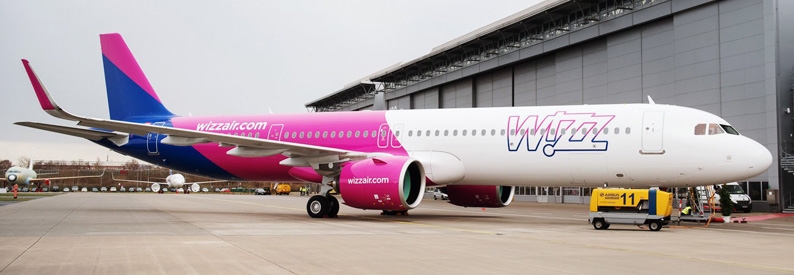Wizz Air Takes Delivery of First GTF-Powered A321XLR

Wizz Air has become the world’s first operator of the A321XLR equipped with Pratt & Whitney GTF engines, as Airbus delivered the inaugural aircraft on May 20, 2025. The milestone ceremony at the A320 Final Assembly Line in Hamburg brought together executives from Airbus, Pratt & Whitney’s parent RTX, and Wizz Air to celebrate the launch of a new era in fuel-efficient, long-range narrowbody travel for low-cost carriers.
Configured in a single-class layout with 239 seats, Wizz Air’s new A321XLR features Airbus’s advanced Airspace cabin. The innovative design incorporates dynamic lighting settings that adapt to different flight phases, helping to reduce passenger fatigue on routes that can stretch up to eight hours. With this delivery, Wizz Air underscores its commitment to enhancing passenger comfort while maintaining the operational efficiency that has driven its rapid growth across Europe.
Wizz Air operates an all-Airbus fleet of more than 230 A320 family aircraft and has a backlog of 295 jets awaiting delivery. The carrier’s order includes 47 GTF-powered A321XLRs, reflecting its confidence in the extended-range narrowbody to open new markets. Pratt & Whitney’s GTF engine already powers 110 of Wizz Air’s A321neo family aircraft, delivering double-digit improvements in fuel burn and emissions compared with previous-generation powerplants.
In addition to its A321neo fleet, Wizz Air flies 67 A320ceo models fitted with IAE V2500 engines. The introduction of the GTF-powered A321XLR will allow the airline to expand low-cost service on transcontinental routes that were once the domain of widebody aircraft. By leveraging the aircraft’s extra-long range capability, Wizz Air can explore destinations in North Africa, the Middle East, and beyond without the expense of larger jets.
Rick Deurloo, President of Commercial Engines at Pratt & Whitney, praised the partnership and lauded the engine’s world-class fuel efficiency and operating economics. He highlighted how the GTF engine family supports airlines in their efforts to reduce carbon emissions while maintaining profitability. The GTF’s architecture, featuring a geared fan system, enables quieter operations and lower maintenance costs, advantages that are especially attractive in densely regulated European markets.
Sustainability remains a priority for both Airbus and Pratt & Whitney. The delivered A321XLR is already certified to operate with up to 50 percent Sustainable Aviation Fuel (SAF), and Airbus aims to enable full 100 percent SAF operation by 2030. These advancements align with Wizz Air’s environmental targets, which include carbon-neutral growth and incremental reductions in per-seat emissions across its expanding network.
With the first A321XLR now in Wizz Air’s fleet, preparations are underway for its entry into commercial service. Training for pilots and maintenance crews is in progress, and initial route deployments are expected to be announced in the coming weeks. Industry analysts anticipate that Wizz Air will deploy the aircraft on high-density routes where extended range and lower operating costs will strengthen its competitive edge.
As the aviation sector recovers from pandemic setbacks, the arrival of the A321XLR marks a significant step toward the low-cost long-haul model. Wizz Air’s embrace of the Pratt & Whitney GTF-powered variant demonstrates how legacy technologies can be reimagined to meet evolving market demands. Passengers and investors alike will be watching closely as Wizz Air breaks new ground with the world’s first GTF-powered A321XLR in service.
Related News : https://airguide.info/?s=Wizz+Air
